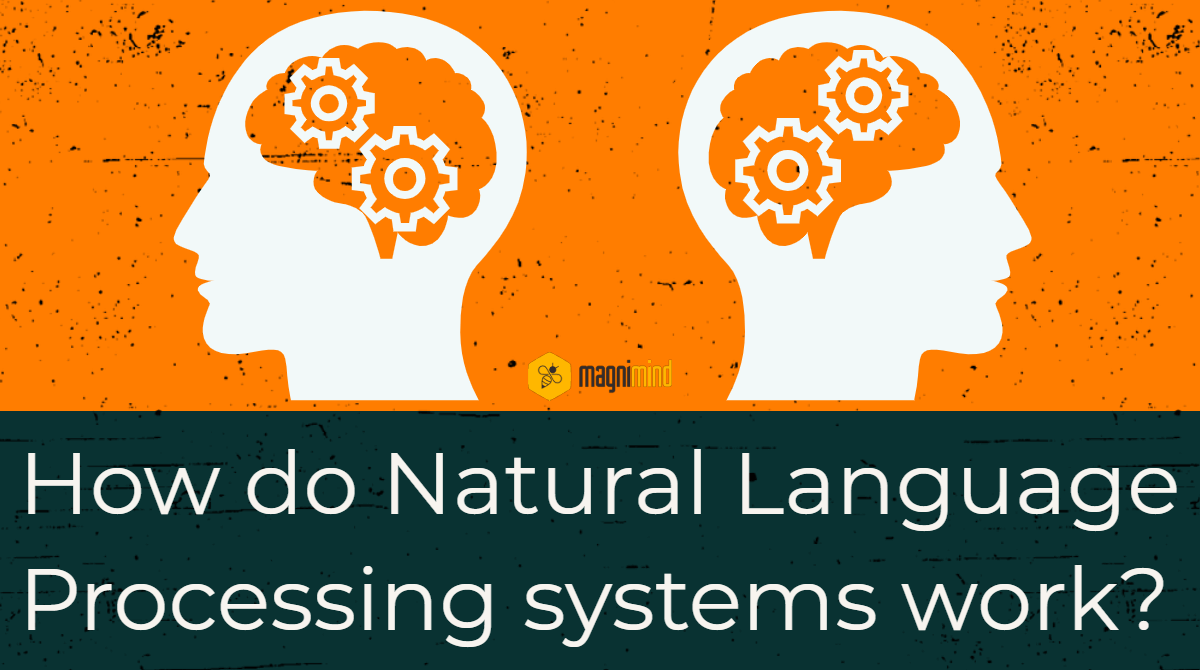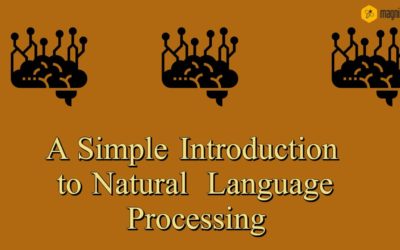Probably you are already aware of the fact that artificial intelligence and machine learning are all around us, from phones to devices and a huge number of things in between. But do you know what is the core technology that enables these devices to perform effectively? It’s natural language processing or NLP. Have you ever come across situations like you’re typing something on your smartphone and it is coming up with word suggestions based on what you’re currently typing and what you usually type? Surely you did and that’s a natural language processing system in action. We surely overlook the technology and take it for granted but in the business domain, it is one of the biggest innovations that have transformed the entire domain.
This post aims at giving you an overview of what is a natural language processing system, how it works, and some of its most common applications. Let’s delve deeper.
1- What is a natural language processing system?
At its core, natural language processing is a subset of artificial intelligence that helps machines comprehend, interpret, and manipulate natural language used by humans like text and speech. Its main objective is to fill the gaps between computer understanding and human communication. Natural language processing is an emerging technology which drives different forms of artificial intelligence we’re used to experiencing. While natural language processing is nothing new and has been studied for a significant number of decades, these days it’s advancing rapidly thanks to the availability of big data, enhanced algorithms, powerful computing, and an increased interest in the communications between humans and machines.
2- How a natural language processing system works
Performing natural language processing is difficult mainly because of the complex nature of human language. Understanding the human language comprehensively needs an understanding of the concepts and the words, and how they’re connected in order to deliver the intended results. While we can master a language quite easily, the imprecise characteristics and ambiguity of the natural languages are the two biggest aspects that make a natural language processing system difficult to be implemented.
In order to understand how a natural language processing system works, it would be helpful to understand how we use language. Each day, we generate hundreds, for example, of words in a declaration which are interpreted by other people to do numerous things. For us, it’s simple communication, but everyone knows that the words come with a deeper context. There’s always some context which we derive from what we speak and how we speak it. Whenever we say something to another person, that person can understand what we are actually trying mean. The reason is humans learn and develop the ability to understand things through experience. Here, the question is how we can offer that experience to a machine. The answer is we need to provide it with sufficient data to help it learn through experience.
The first working step of a natural language processing system relies on the system’s application. For instance, voice-based systems like Google Assistant or Alexa need to translate the words into text. Usually, this is done using HMM (Hidden Markov Models) system. The HMM utilizes mathematical models to determine what a person has said and translate that into text utilizable by the natural language processing system. Next step is actual understanding of the context and the language. Though the techniques slightly vary from one natural language processing system to another, they follow a fairly similar format on the whole. The systems attempt to break every word down into its noun, verb etc. This happens via a series of coded rules which depend on algorithms which incorporate statistical machine learning in order to help determine the context.
If you are thinking about the working procedure of a natural language processing system other than speech-to-text, the system skips the initial step and directly moves into analyzing the words utilizing the algorithms and grammar rules.
The final outcome is the ability to categorize what a person says in many different ways. The results get utilized in different ways depending on the underlying objective of a natural language processing system.
When you’re learning how a natural language processing system works, it’s also important to obtain an overview of its key components. Let’s have a quick look at each of them.
- Syntactic analysis: Syntax stands for the words’ arrangement in a sentence so that they can make grammatical sense. In natural language processing, syntactic analysis is utilized to assess the way the natural language gets aligned with the grammatical rules. Here, grammatical rules are applied by using computer algorithms to a group of words in order to derive meaning from them.
- Semantic analysis: Semantic analysis refers to a structure developed by the syntactic analyzer that assigns meanings. Here, computer algorithms are applied to understand the interpretation and meaning of words and the way sentences are structured. It’s important to note that this component only abstracts the real meaning or dictionary meaning from the given context.
Two popular methods are applied to implement a natural language processing system – machine learning and statistical interference.
3- Some most common applications of natural language processing systems
Natural language processing systems are being steadily implemented by a wide range of businesses, regardless of the domain and industry. Here’re some most common applications of this technology.
3.1- Chatbots
Chatbots are highly responsible for mitigating customer frustration about customer care call assistance. They offer virtual assistance for resolving simple problems of the customer where no skill is required. These days, chatbots are gaining lots of popularity and trust from both the consumers and the developers.
3.2- Language translation program
Natural language processing systems are often implemented to help language translation programs that can translate from one language to another (for instance, English to German). The technology allows for rudimentary translation before a human translator gets involved. This cuts down the time required for translating documents.
3.3- Sentiment analysis
Here, natural language processing systems are used to understand and analyze the responses to business messages posted on social media platforms. It helps the business to analyze the emotional state and attitude of the person commenting or engaging with posts. Widely used on social media and web monitoring, sentiment analysis is implemented by using a combination of statistics and natural language processing by assigning values to the texts and then attempting to identify the context’s underlying mood.
3.4- Search autocomplete
Search autocomplete is another application of natural language processing that a lot of people use on a regular basis. Internet search engines and some personal search engines of companies have integrated this application to boost user experience. Sometimes, users may know just one keyword instead of the entire search term or phrase. Search autocomplete helps them to locate the correct search term and get the answers faster.
3.5- Descriptive analytics
Capturing reviews for products/services comes with a multitude of benefits. They can not only boost confidence in potential customers but seller ratings can also be activated using it. Businesses use natural language processing-equipped tools that can pull together consumer feedback and analyze it, pointing out how frequently different types of pros and cons are mentioned.
3.6- Search autocorrect
It’s quite normal to make mistakes when typing something and fail to realize it. If the search engine on a business’s website doesn’t identify the mistake and comes up with ‘no results’, it’s natural for potential buyers to assume that the store doesn’t have the answer or information they are looking for. With the help of natural language processing systems chances of these occurrences can be reduced by equipping the website with a search autocorrect feature. It identifies errors and comes up with appropriate results without needing users to perform any additional steps, similar to that of a Google search.
3.7- Form spell check
Spell check is one of the most commonly used applications of natural language processing systems. It’s simple to use and can eliminate lots of headaches for both agents and users. Not every user takes the time to compose grammatically perfect sentences when writing to a sales agent or a customer help desk. With the help of natural language processing-equipped contact forms, businesses are now able to make the lives of both the users the customer support executives because error-ridden messages aren’t only difficult to interpret but may result in frustration and miscommunication for everyone involved.
Parting Thoughts
At this moment, natural language processing is trying to identify nuances in language meaning occurring due to different reasons – from spelling errors or dialectal differences to lack of context. Despite all these limitations, the discipline is developing at quite a fast pace and we can expect to reach a certain level of advancement in the near future. We can expect to see that with the help of the natural language processing systems, future machines or computers will be able to learn from the information available online and apply that information in the real-world. However, a lot of work is needed to be performed in order to enable the machines to attain that high level of intelligence.
. . .
To learn more about data science, click here and read our another article.










